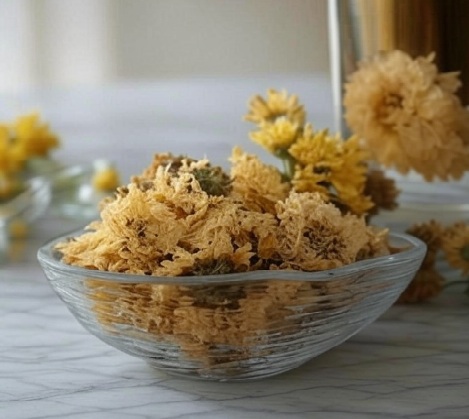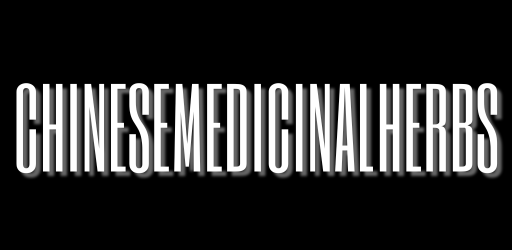Chrysanthemum Flower

Chrysanthemum Flower (Ju Hua): A Cooling Herb for Eyes, Liver, and Wind-Heat Relief
Introduction
Chrysanthemum flower, known as Ju Hua (菊花) in Traditional Chinese Medicine (TCM), is a delicate, floral herb traditionally used to dispel wind-heat, brighten the eyes, and calm the Liver. With its light, cooling nature and subtly sweet-bitter flavor, Ju Hua is often sipped as a tea or included in formulas for red eyes, tension headaches, or seasonal allergies. It’s especially valued for clearing the upper body’s heat while nourishing yin and supporting emotional calm.
What Is Chrysanthemum Flower?
Ju Hua is the dried flower of the Chrysanthemum morifolium plant. In TCM, it is classified as sweet, bitter, and slightly cold, entering the Liver and Lung meridians. Chrysanthemum is traditionally used to clear heat and toxins from the head and eyes, release wind-heat from early-stage colds, and nourish the Liver to ease dizziness and blurred vision. Different types—such as Gong Ju, Bai Ju, and Ye Ju Hua—offer slightly varied effects but share the same cooling, cleansing foundation.
Health Benefits of Chrysanthemum Flower
Clears Wind-Heat and Eases Cold Symptoms
Ju Hua is often used at the early stage of wind-heat invasion, especially for sore throat, fever, mild chills, and headache.
Brightens the Eyes and Improves Vision
It helps relieve red, itchy, or dry eyes due to heat, overexposure to screens, or Liver imbalance.
Calms the Liver and Clears Heat
Chrysanthemum supports the Liver’s cooling function, helping with stress, dizziness, irritability, or eye floaters.
Supports Detoxification and Skin Clarity
Its gentle detoxifying properties help with acne or skin irritation linked to internal heat.
Soothes the Spirit and Reduces Tension
Ju Hua’s floral nature helps calm the mind and can ease emotional restlessness or mild hypertension.
How to Use Chrysanthemum Flower
In Herbal Teas or Cooling Infusions
Steep 3–6 grams of dried Ju Hua flowers in hot water (not boiling) for 5–10 minutes. Combine with goji berries, honeysuckle, or licorice for added benefits.
In Eye-Nourishing Broths or Soups
Simmer gently with white fungus, lily bulb, or mulberry leaf for a light, cooling tonic soup that supports eye and skin health.
In Flower Blends or Summer Drinks
Add to chilled teas or iced herbal blends during warm months to refresh the body and clear residual heat.
Where to Buy Chrysanthemum Flower
You can find Ju Hua at the following places:
-
Chinese herbal medicine shops
-
Asian grocery stores in the tea or dried herb sections
-
Online retailers such as Amazon, iHerb, or traditional apothecaries
Look for:
-
Whole, clean yellow or white blossoms with a floral aroma
-
Organic or pesticide-free labeling
-
Properly sealed, moisture-controlled packaging
Are There Any Side Effects?
Chrysanthemum is very gentle and safe for most people. It may cause mild digestive discomfort if consumed excessively or on an empty stomach. Those with cold constitutions should avoid overuse. Avoid during pregnancy in high doses unless directed by a qualified practitioner.
Conclusion
Chrysanthemum flower, or Ju Hua, is a cooling, floral herb in TCM that clears wind-heat, soothes the eyes, and calms the Liver. Whether enjoyed as a fragrant tea or used in light herbal soups, this elegant blossom is a time-honored remedy for seasonal imbalances, stress, and visual strain.
FAQs
Can I drink chrysanthemum tea every day?
Yes, especially in warm weather or when experiencing heat symptoms. Use moderate amounts and rotate with other cooling herbs.
What does chrysanthemum taste like?
It has a light floral taste with mild bitterness and a smooth, cooling finish.
Is chrysanthemum flower safe for children?
Yes, in small doses and when steeped as tea. It’s often used for mild fevers, red eyes, or restlessness.

